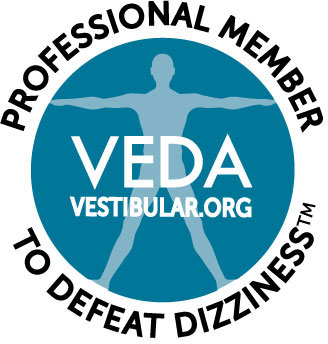Have you ever wondered why you have two eyes but don’t see with double vision? Your ability to see one clear picture rather than double images is thanks in large part to your extraocular muscles, tiny muscles that control the movement of your eyes. Sometimes, however, these muscles can become strained due to a medical condition or an injury, causing a range of uncomfortable symptoms including dizziness and headaches.

Unfortunately, many people who exhibit signs of eye muscle strain—such as migraines, dizziness, nausea and trouble concentrating—don’t realize that the underlying cause could be related to their eyes, as these symptoms can appear with a number of other unrelated conditions. As a result, these patients seek treatment from a variety of doctors, but rarely from a neurovisual specialist. The result is they don’t receive an accurate diagnosis or effective treatment.
What Causes Eye Muscle Strain?
A common cause of eye muscle strain is a condition known as vertical heterophoria or binocular vision dysfunction, which occurs when the vertical alignment of the eyes is off. The misalignment can be due to the structure of the face (i.e., one eye is slightly higher than the other), or a result of abnormalities with the muscles or nerves in the eyes. It is often a genetic condition, although it can also be caused by a stroke, a neurological disorder or a head injury.
When your eyes are not properly aligned, you may experience double vision, which the brain rejects. To compensate for the misalignment and keep your eyes moving in sync, the extraocular muscles have to work overtime. Eventually, these tiny muscles become strained and fatigued, leading to a range of painful symptoms.
What are the Symptoms of Vertical Heterophoria?
Vertical heterophoria can cause many unpleasant symptoms, including:
-
Pain when moving the eyes, especially when looking up (similar to symptoms of a sinus infection).
-
Headaches centered in the temples or front of the face.
-
Dizziness or lightheadedness.
-
Nausea and motion sickness.
-
Poor coordination (unsteadiness when walking, general clumsiness).
-
Difficulty concentrating, especially when reading.
-
Blurred or double vision.
-
Sensitivity to light.
-
Anxiety or a feeling of being overwhelmed, especially in crowded spaces.
Many of the symptoms of vertical heterophoria occur with other medical conditions, including sinus infections, strokes, ADHD, inner ear disorders and various psychological disorders. As a result, patients are often misdiagnosed and provided ineffective treatment.
Get an Accurate Diagnosis at the Neuro Visual Center of New York
Dr. Cheryl Berger Israeloff of the Neuro Visual Center of New York will perform a comprehensive exam to test for vertical heterophoria and related conditions. This highly specialized exam measures the movement of your eyes to reveal tiny misalignments. Our team can provide an accurate diagnosis and a treatment plan that doesn’t just address your individual symptoms, but gets to the root of your condition—resulting in permanent relief. Call us today at (516) 224-4888 to schedule an appointment if you suspect that you or a loved one may be suffering from eye muscle strain.





